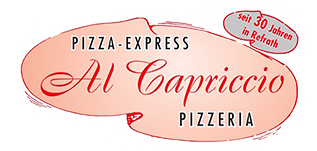Maintaining a sanitary environment is a never-ending commitment for any business, but applying disinfectant solutions doesn’t have to hinder daily functions. Finding the right timing for processes like fogging is key to balancing hygiene and productivity. The goal is simple: achieve optimal sanitization with team safety and no disruption.
Fogging offers a method to rapidly and evenly distribute disinfectant across large areas. However, its nature poses certain questions. How can businesses take full advantage of this technology without interrupting workflows, and how can this be done while adhering to safety protocols? The answer lies in carefully planning the fogging schedule, often suggesting a time no cleanup needed and no employees present. Understanding the benefits of after-hours scheduling is vital for businesses of all sizes.
Fogging Schedule for Businesses
Selecting the correct fogging schedule significantly impacts operational smoothness. Ideally, fogging should integrate seamlessly into the business’s existing cleaning procedures. Determine the frequency based on risk assessment, foot traffic, and local health guidelines. Businesses dealing with food or healthcare may require more frequent fogging compared to retail spaces.
Consider operational constraints. Certain businesses might find the
External factors, such as weather conditions, could also influence scheduling. Avoid fogging during periods of high wind or rain as this can reduce the treatment’s reach. Consult with the fogging service provider to determine the most suitable days and times for application. Flexibility is good. Plan some alternative dates.
Minimizing Customer Disruption During Fogging
Businesses understand the necessity of thorough disinfection, but customer inconvenience is a major concern. Strategic scheduling and using the right fogging methods can drastically reduce disruption. An ideal solution involves using an https://pestrangersca.com/, which eliminates strong smells that might deter customers. The fact that there is no cleanup needed also speeds up the process and allows for a faster return to normal operations.
For many establishments, the night service is the preferred option. This ensures that the fogging procedure is completed after business hours, minimizing any impact on customer traffic. Others may find that an early am slot, before the start of the business day, offers a suitable alternative, guaranteeing same-day reopening.
Prioritizing team safety during the fogging process is also paramount. Choosing providers with protocols that minimize the need for prolonged workspace closure following treatment will benefit the business. Open communication about the fogging schedule and the method used with employees will ensure a smoother operation.
Ensuring Product Safety After Fogging Application
After the application of fogging, ensuring the safety of products is paramount. Factors to consider include the nature of the fog used and the time allocated for it to settle before reopening to customers.
- Odorless Fog: Many modern fogging solutions are designed to be odorless, which minimizes any immediate concerns about lingering smells that could affect products. This allows businesses to maintain a pleasant atmosphere even after fogging.
- Fast Drying: Products should be safe to handle shortly after fogging due to the fast-drying nature of some solutions. Businesses can confidently return to operations without long waits.
- No Cleanup Needed: Most fogging applications require no cleanup post-treatment. This convenience allows businesses to focus on their operations rather than time-consuming cleanup tasks.
- Quiet Hours: Scheduling fogging during quiet hours, such as an early AM slot, ensures minimal disruption while still allowing the fog to settle adequately for safety.
- Same-Day Reopening: Many businesses can reopen on the same day after fogging, reassuring customers that the environment is safe without extensive downtime.
By considering these elements, businesses can ensure that product safety remains a priority after fogging, providing peace of mind to both staff and customers.
Optimizing Ventilation Post-Fogging for Quick Re-entry
After fogging, proper ventilation is key to ensure a safe and prompt return for staff and customers. Utilizing quiet hours, such as early AM slots, allows businesses to implement thorough air circulation without disrupting operations. Ensuring that the area is well-ventilated speeds up the drying process, leading to no cleanup needed once the fogging has been completed.
To achieve optimal airflow, opening windows and using fans can enhance the removal of any residual particles. This approach not only aids in fast drying but also reinforces team safety by creating a healthy environment for re-entry.
Custom timing of fogging and ventilation can allow for same-day reopening while maintaining high standards of safety and comfort. By strategically planning ventilation alongside fogging schedules, businesses can minimize downtime and maximize operational efficiency.
